 |
LagondaNet
|
| View previous topic :: View next topic |
| Author |
Message |
jonc
Joined: 21 Sep 2010
Posts: 584
Location: Cheshire, UK
|
 Posted: Sat Jun 27, 2015 1:32 pm Post subject: Impulse relays Posted: Sat Jun 27, 2015 1:32 pm Post subject: Impulse relays |
 |
|
I recently had a look at two faulty impulse relays - one original one, and one modern replacement.
These are both from 13277. I replaced the original one on the side lights because it was extremely unreliable. The replacement also failed after a short time, but shortly after this I found out that the front side light bulbs were 21W which were far too high wattage.
Here is the original one:

It is marked up as a 24V coil, and it has two sets of change-over contacts. That makes it DPDT - 'double pole, double throw'.
When the coil of the relay is sent a short pulse, it causes the relay contacts to switch over. Without power they stay in the same place which is unlike a typical automotive relay which returns to its rest state when power is removed. Effectively it has a memory.
So, why do these relays fail? The first observation is that they are not a sealed unit. This means dirt will get into them - that has certainly happened in my case!
I thought I would take a look inside to see how they worked. The clear plastic lid comes off quite easily. You can then separate the coil part from the contact and mechanical part.
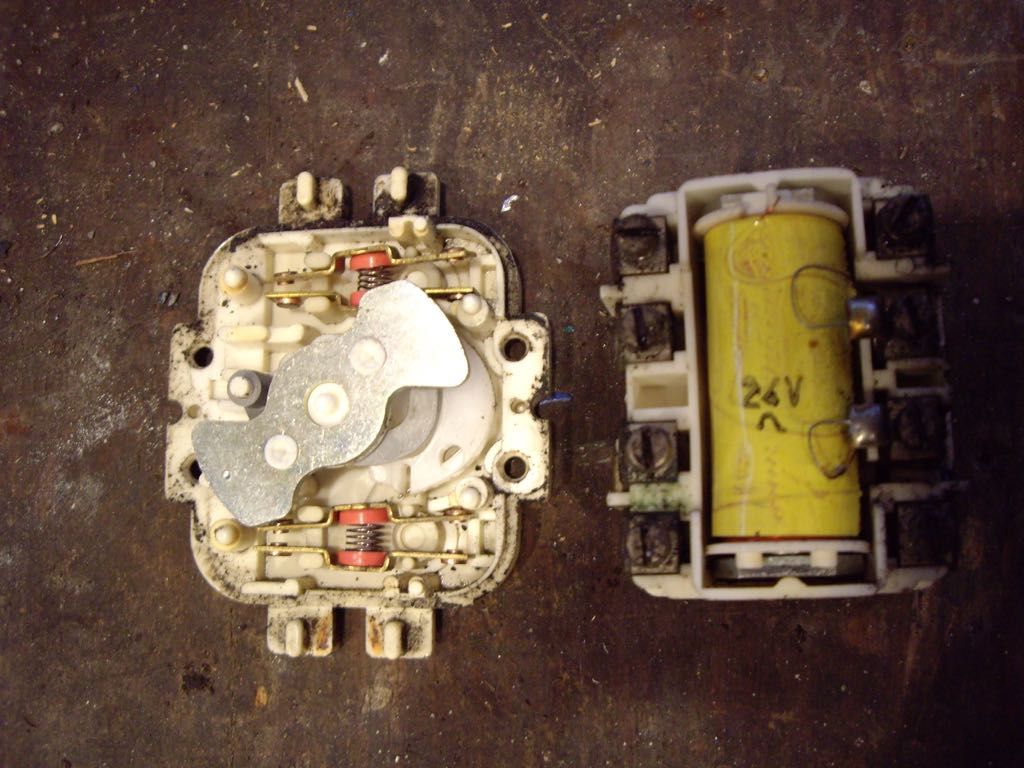
You can see there is a butterfly shaped metal armature which rotates about 90 degrees when the coil is powered. Underneath this are some white and grey plastic parts which move the contacts when this happens. One rotation and return of the armature clicks the contacts one way, and another back - like a ball point pen.
I thought I would disassemble, clean, grease and reassemble to see if this made it work properly.
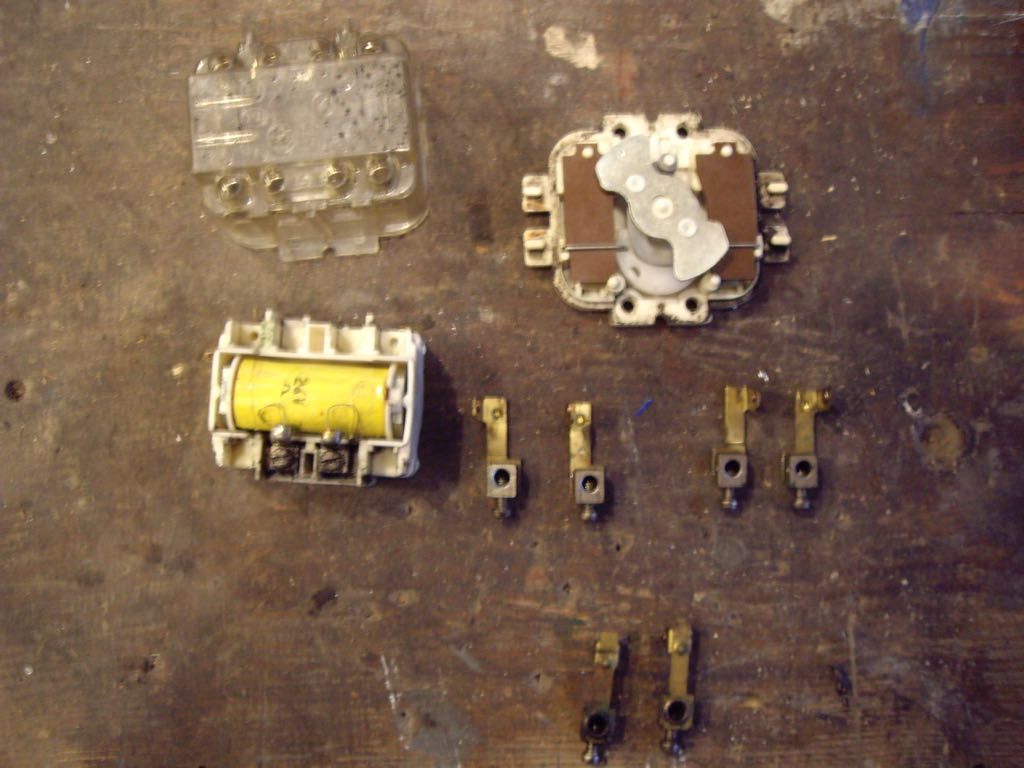
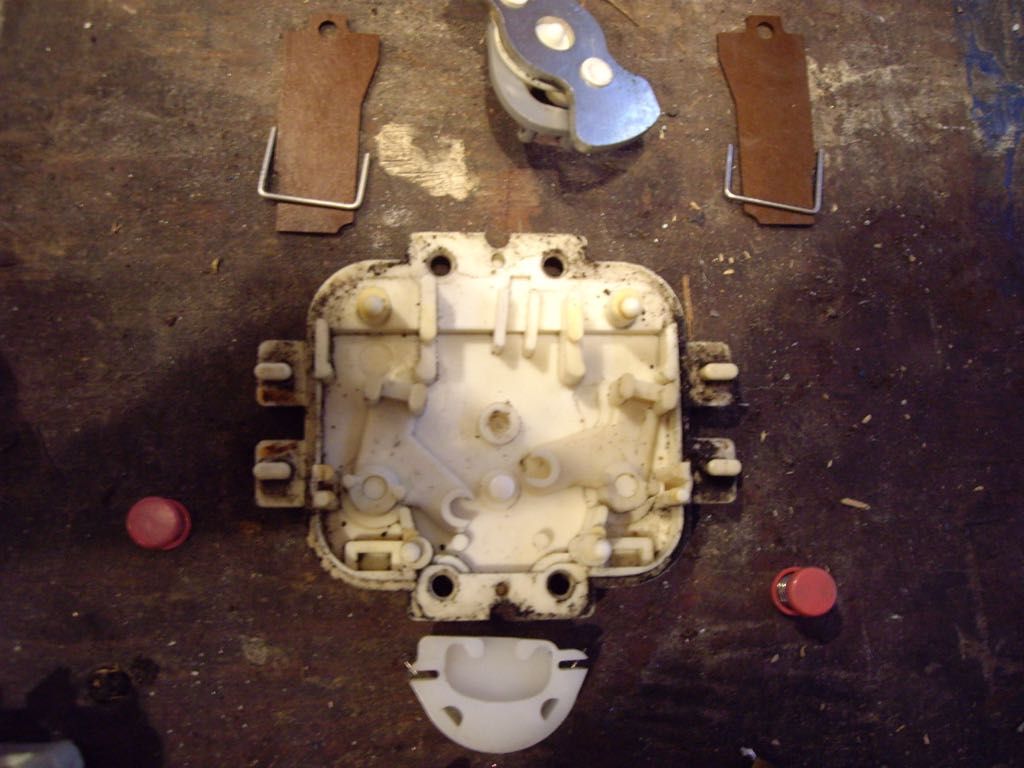
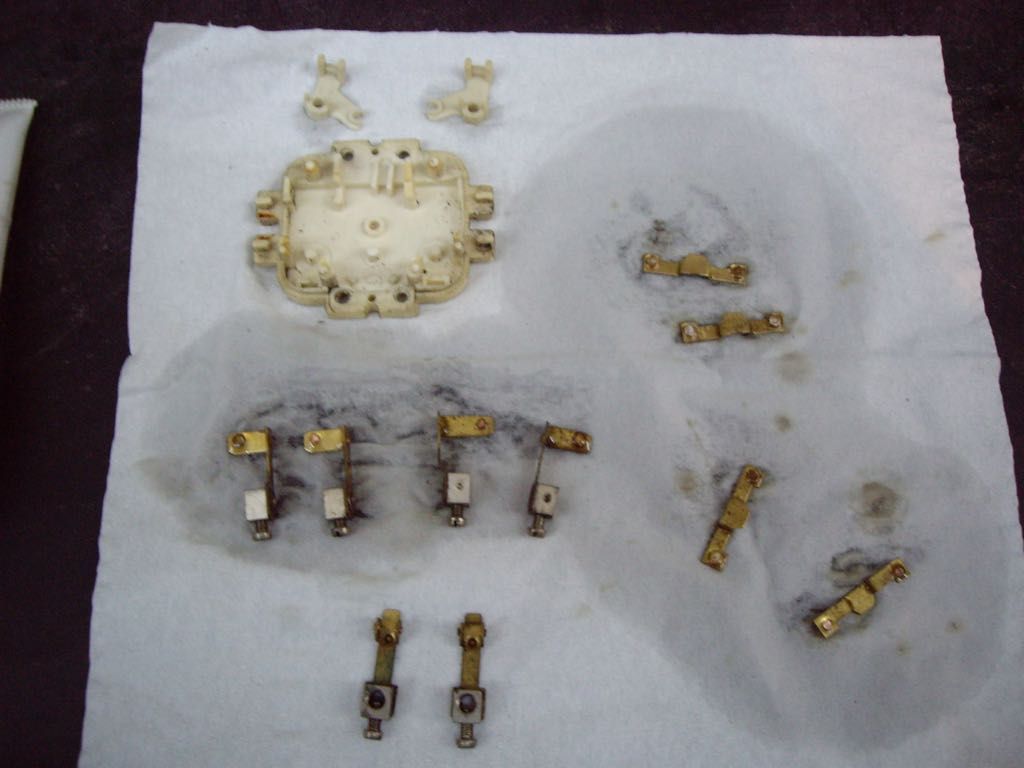
And the end result? It was exactly the same! I then tried various voltages to see if this had an effect - no. It will operate down to around 9 or 10 volts, but the problem seemed to be the armature not returning properly to reset the mechanism.
This is a mechanically complex relay - it has 20 or so moving parts including four springs and I think it is most likely wear to the moving parts which causes the reliability problems. This is in contrast to the electrical contacts which were sturdy and in perfect condition. |
|
| Back to top |
|
 |
jonc
Joined: 21 Sep 2010
Posts: 584
Location: Cheshire, UK
|
 Posted: Sat Jun 27, 2015 2:13 pm Post subject: Posted: Sat Jun 27, 2015 2:13 pm Post subject: |
 |
|
Now the modern replacement; this is also rated with 10 amp contacts. Here is it with the lid off:
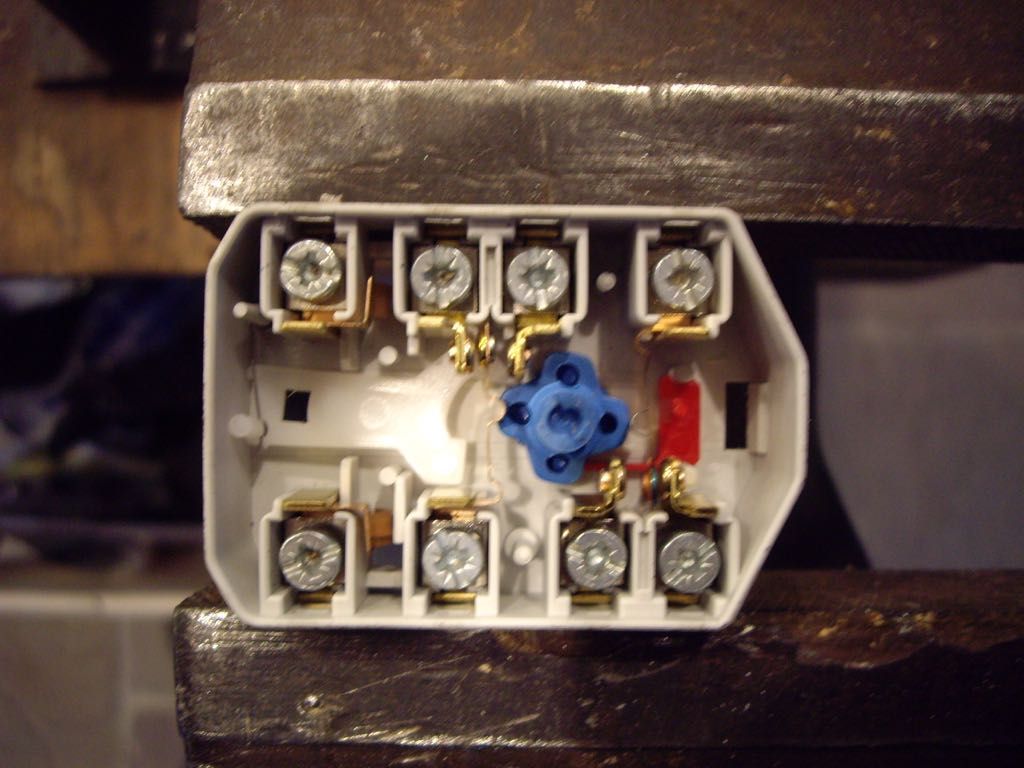
It has a coil underneath which operates just like a normal relay. The moving armature of this relay pokes through to this top part on the left (where the square hole is) and moves from left to right when the relay is powered. This operates the white plastic part, and this rotates the blue cam. You should be able to see what the problem is already.
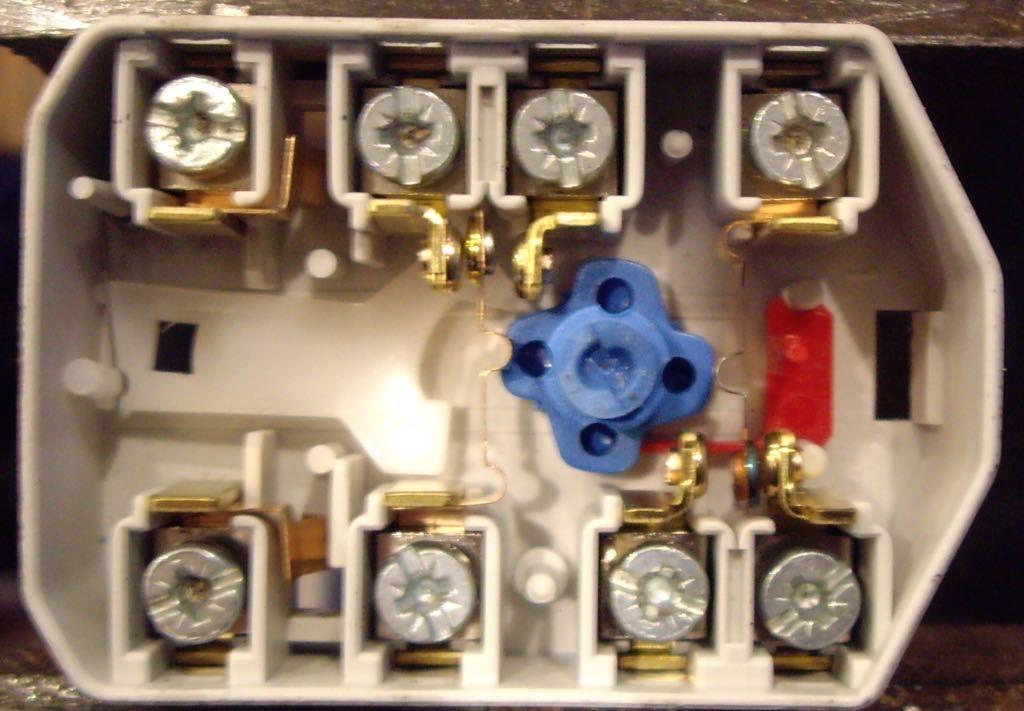
Two opposite lobes of the cam operate the two sets of contacts. The left one has been carrying the excess current from my incorrect 21W side light bulbs and has been getting hot. This has melted the cam:
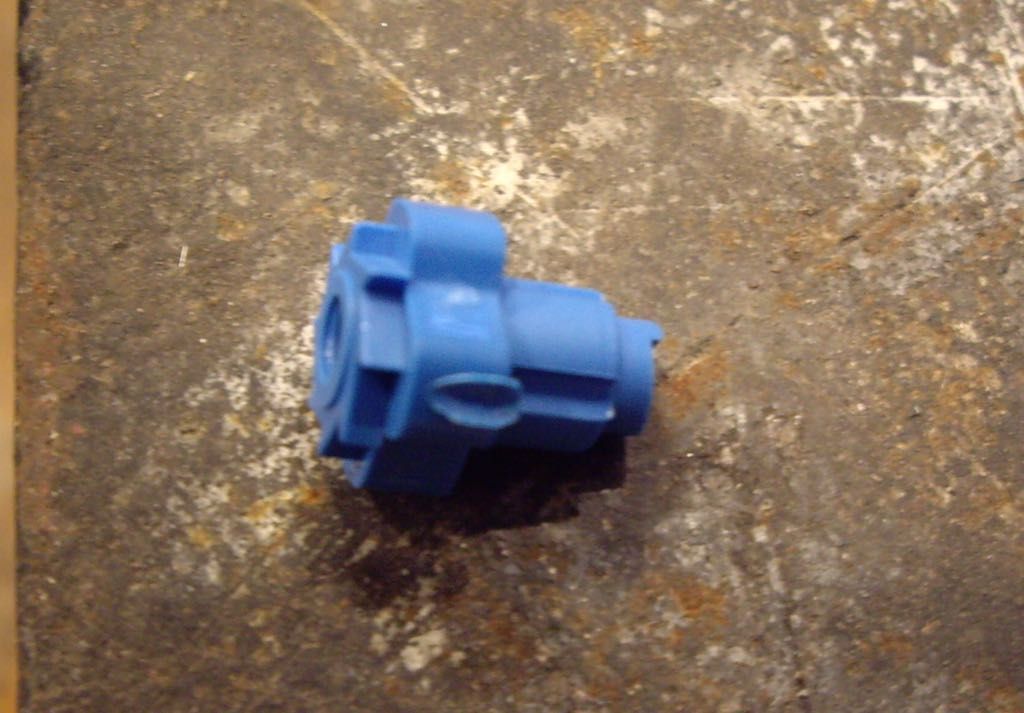
So - what was the current at the time:
Outside:
Front side lights: 2x 21W (wrong bulbs!)
Rear side lights: 2x 5W
Number plate lights: 2x 5W
Inside:
Dash warning light: 2W
Dash illumination: 4x 2W
Door touch switch illumination: 2x 2W
Cigar lighter illumination: 2x 2W
Total wattage: 62W (outside) + 18W (inside) = 80W
Total current: I=P/V where V=12v = 6.66A
So - this is well within the current rating, and yet the contact must have heated up to cause the damage. Even allowing for additional current draw from other relays controlled from this circuit it is well within tolerance.
I can only assume that the under-bonnet temperatures have had an effect here. It may be that the design of the relay allows for some heating effect and this is dissipated at the maximum operating temperature of the relay (40 degrees C) but at higher temps it is not. The design of this relay has far fewer moving parts (good) but the design also requires that the electrical contacts are springy and so thinner, which increases the heating effect of them at higher currents.
I think I read a comment about Roger's lights failing due to a relay problem. This would be with a current of 2.66A less =4A.
So - what's the solution? All instrumentation-type relays like the original impulse relay and its modern equivalent have a similar operating temperature range. By increasing the temperature, you decrease the maximum operating current. My suggestion would be to fit LED bulbs. |
|
| Back to top |
|
 |
Lagondanet
Administrator

Joined: 03 Jan 2007
Posts: 3110
Location: UK
|
 Posted: Sun Jun 28, 2015 10:28 pm Post subject: Posted: Sun Jun 28, 2015 10:28 pm Post subject: |
 |
|
| Great job Jonathan, As always. |
|
| Back to top |
|
 |
|
|
You cannot post new topics in this forum
You cannot reply to topics in this forum
You cannot edit your posts in this forum
You cannot delete your posts in this forum
You cannot vote in polls in this forum
|
|










